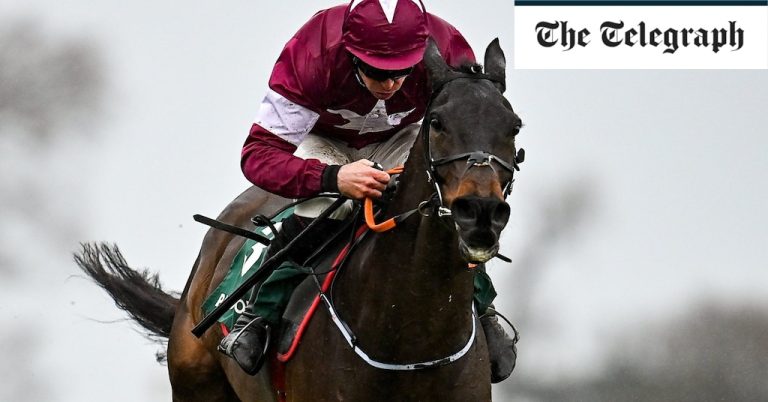The Aintree Festival, and the 176th running of the Randox Grand National, is almost upon us.
A total of 51 horses remain in contention for the main event, including last year’s winner Corach Rambler. Check our comprehensive guide to the runners and riders for full details. The next round of scratches will come at the 48-hour declaration stage on Thursday.
In the build-up to the Grand National, don’t miss our best tips. You can also read more about the horse being ridden by a trainer’s wife, and columnist Charlie Brooks on racing’s cocaine problem.
When is the Aintree Grand National?
The Grand National is the highlight of Aintree’s three-day Grand National Festival, which runs this year from Thursday, April 11 to Saturday, April 13.
The main event, the Grand National itself, is on the Saturday afternoon.
What time does the 2024 Grand National start?
The runners will be sent on their way at 4pm on Saturday, April 13.
The start time has been brought forward from 5.15pm, after the controversial 2023 edition of the race, in order to improve the likelihood of good ground. The Jockey Club said the new start time was part of “an ongoing focus on equine welfare”.
Where is the 2024 Grand National held?
The race takes place at Aintree Racecourse, on the outskirts of Liverpool. Since the first edition in 1839, the race has never officially been held anywhere else.
Are Grand National tickets available?
Tickets for each day of the festival are on sale via the Jockey Club website. For the day of the Grand National prices start at £45 for adults in The Embankment. Many other enclosures have already sold out. The most expensive hospitality package on sale is £1,225. Car parking is an additional £35, or £60 if you want to park within easy walking distance of the course.
How many horses run in the Grand National?
For 2024, the total number of horses in the Grand National has been reduced from 40 to 34, in order to improve the safety of the race. The highest number of runners was 66, in 1929. The race has also featured as few as 10 horses, back in 1883.
When are the horses announced?
The final 34 horses will be confirmed on Thursday – 48 hours before the race. As of last year, if a horse is withdrawn after these 48-hour declarations, that horse will not be replaced.
Initial entries for the race had to be made by February 6, with the BHA then publishing the weights (see below) two weeks later, on February 20. The five-day declarations took place on Monday, at which point the field was whittled down to 51.
Only a certain number of horses meet the criteria for being allowed to enter the Grand National. Among the qualifications they must:
- have an official rating (OR) of 130 or more (in 2023, horses need only have a rating of 125)
- be aged 7 or older,
- have completed three or more steeplechases,
- have completed one steeplechase in the current season,
- have finished between 1st and 4th in a steeplechase over 2 miles 7½ furlongs or further.
What is the race distance?
Traditionally, the Grand National has been described as a 4½-mile race. The official distance, however, is four miles, two furlongs and 74 yards (4m 2f 74y). This distance is measured two yards inside the innermost rail.
The Grand National is the longest jump race held in the UK.
How long does the Grand National last?
About nine minutes. The record for the course is 8min 47.8sec, held by Mr Frisk in 1990. The jockey that day, Marcus Armytage, is now Telegraph Sport’s racing correspondent.
How many fences are there in the Grand National?
There are 16 individual fences in the race, 14 of which are jumped twice. That makes a total of 30 jumps.
The fences are made from Sitka spruce or Norway spruce, which is transported to Aintree from the Lake District in a fleet of lorries. It takes about three weeks to construct all the fences.
